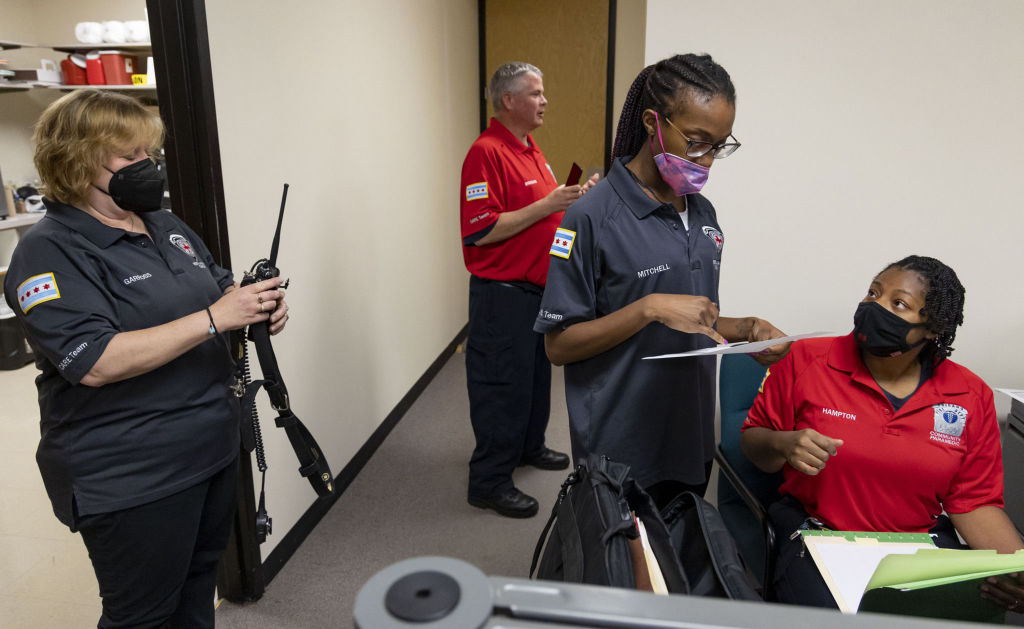
The Department of Justice’s findings from its investigation into the Minneapolis Police Department (MPD), released June 16, 2023, just over three years after the murder of George Floyd, were a stunning indictment of the longstanding culture and practices of the department. DOJ’s investigation found that MPD routinely uses excessive force, discriminates against Black and Indigenous people, violates the First Amendment rights of protesters and the press, and provides an unlawful response to people with behavioral health disabilities. The report is also a stark reminder of the general failure of policymakers to respond to the summer of 2020’s widespread protests calling for the end of persistent cycles of police harassment and violence, especially against Black people.
A closer look at the post-2020 reform landscape, however, reveals that the calls for change after the murder of George Floyd helped accelerate the emergence of alternative first response: a field of practice with the potential to profoundly shift the scope of policing nationwide.
Alternative first response programs send non-law enforcement personnel to respond to and deescalate a wide variety of calls for help: mental health crises, welfare checks, noise complaints, traffic accidents, and other low-level disputes that can take up over half of a police officer’s job. Since 2020, a growing number of cities across the country have begun to pilot these programs. Though these pilots can trace their roots back to longstanding isolated programs like Eugene, Oregon’s CAHOOTS, a mental health crisis intervention program that started in 1989, the demands for reform after the murder of George Floyd were the catalyst that sparked countless municipalities to invest in these alternative first response programs.
Many of these pilot programs have now grown into full-fledged operations. Albuquerque’s Community Safety department (ACS) takes nearly 3,000 calls for service a month, around half of which are diverted from the Albuquerque Police Department. ACS is a cabinet-level public safety department, now deeply embedded into Albuquerque’s first responder system alongside police, fire, and EMS. Albuquerque Police Chief Harold Medina has consistently praised ACS, welcoming the reduction in call volume. He’s not alone: Police leaders and rank-and-file officers across the nation are all in agreement that they respond to far too many types of calls. Rather than focus on law enforcement, ACS responders focus on connecting people to resources that can resolve their problems, like housing, mental health care, a ride across town, or just someone to talk to. ACS’s monthly reports consistently include accounts of individuals connected to these resources—outcomes not likely with a police response.
Albuquerque is only one of dozens of programs that have taken root since 2020, the precise scope of which is different from city to city. Dayton, Ohio’s Mediation Response Unit is dispatched to resolve disputes between neighbors, family, or friends. Denver’s STAR program is expanding to cover mental health calls 24/7. Despite programs responding to hundreds of thousands of calls nationwide, no alternative response program has yet reported the death of a responder on the job, and no responder has killed the person calling for help.
DOJ’s report should help further cement the trend. Its findings in Minneapolis mirror what communities across the country have been telling their policymakers all along: The decision to send law enforcement to many behavioral health-related calls for service is “often harmful and ineffective,” and thus is a violation of the Americans with Disabilities Act. DOJ also pointed out that crisis intervention training of MPD officers wasn’t sufficient to fix the problem.
Read More: What the Police Academy Gets Wrong About Training Future Officers
The shift towards non-police responses to mental health and other calls for service is a consequential one. One in five police killings involve a person in mental health crisis. But just as important, a system of alternative first response represents a framework in which cities begin to respond to people with the care they need–not just the gun, badge, and handcuffs we have available.
A 2020 study by the Vera Institute found that of the 240 million calls made to 911 each year, the majority do not require a response from police, fire, or EMS; the potential number of nationwide calls taken by alternative first response programs runs in the hundreds of millions, not the hundreds of thousands. But despite the incredible growth of alternative first response programs, they are still too small to make a serious dent in this number. City and county policymakers need to start thinking about and investing in alternative first response on a commensurate scale.
Congress may have been unable to pass the George Floyd Justice in Policing Act or any other police reform measures in the aftermath of 2020’s protests, but Congress plays a limited role in crafting public safety strategies. The most critical developments in policing were always likely to start in cities and counties, which is where policymakers decide how the bulk of public safety resources are allocated.
If the most enduring legacy of the George Floyd protests ends up being the development of an alternative first response system that fundamentally reshapes the way jurisdictions provide assistance to their residents, it will be a legacy to be proud of.
More Must-Reads From TIME
- The 100 Most Influential People of 2024
- Coco Gauff Is Playing for Herself Now
- Scenes From Pro-Palestinian Encampments Across U.S. Universities
- 6 Compliments That Land Every Time
- If You're Dating Right Now , You're Brave: Column
- The AI That Could Heal a Divided Internet
- Fallout Is a Brilliant Model for the Future of Video Game Adaptations
- Want Weekly Recs on What to Watch, Read, and More? Sign Up for Worth Your Time
Contact us at letters@time.com